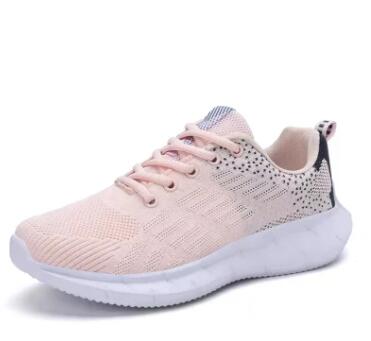How has the design of sports shoes evolved over time
2023-10-27
The design of sports shoes has evolved significantly over time, reflecting advancements in technology, materials, biomechanical understanding, and changing sports and athletic trends. Here are some key ways in which the design of sports shoes has evolved:
1. Materials: Early sports shoes were often made of leather or canvas, which limited their flexibility and breathability. Modern sports shoes incorporate a wide range of materials, including synthetic mesh, knit fabrics, and engineered materials, which offer improved breathability, lightweight construction, and durability.
2. Cushioning: Older sports shoes had minimal cushioning, leading to discomfort and a higher risk of injuries. Today's sports shoes feature advanced cushioning technologies, such as air cushions, gel, and specialized foams, providing superior shock absorption and comfort.
3. Specialization: Sports shoe design has become highly specialized for different sports and activities. There are now dedicated shoes for running, basketball, soccer, tennis, golf, hiking, and more. These shoes are tailored to the specific demands of each sport.
4. Biomechanics: A deeper understanding of foot biomechanics has influenced sports shoe design. Features like arch support, pronation control, and custom orthotic compatibility are integrated into sports shoe designs to cater to individual foot types.
5. Tread Patterns: The outsole tread patterns have evolved to provide optimal traction on different surfaces. Trail running shoes have rugged, multidirectional treads, while soccer shoes have conical or bladed studs for grip on grass.
6. Weight Reduction: Advances in materials and manufacturing techniques have led to lighter sports shoes. Reduced weight enhances agility and performance, particularly in running and other high-intensity activities.
7. Ankle Support: Certain sports shoes, like high-top basketball shoes, are designed to provide added ankle support and injury prevention. This innovation was developed in response to the specific needs of basketball players.
8. Ventilation: Improved ventilation features have been incorporated into sports shoes to keep the feet dry and comfortable during physical activities. Breathable mesh uppers and moisture-wicking materials help prevent overheating and discomfort.
9. Sustainability: Sports shoe manufacturers are increasingly prioritizing eco-friendly materials and sustainable production processes in response to environmental concerns.
10. Customization: Some sports shoes allow for personalization and customization, allowing users to choose colors, materials, and even fit adjustments for a more tailored experience.
11. Closure Systems: Traditional laces have been supplemented with alternative closure systems, such as Velcro straps, Boa systems, and slip-on designs, to enhance convenience and fit.
Overall, the design of sports shoes has evolved to enhance performance, comfort, and injury prevention while catering to the unique needs of athletes and individuals participating in various sports and physical activities. Advances in materials, technologies, and research have played a significant role in shaping the modern sports shoe industry.



